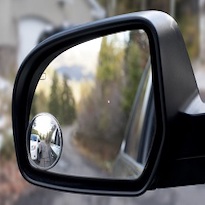One of my regular riders has been sitting in the front row of my class for months. I’ve often thought to myself, “Her saddle height seems a bit low,” but truth be told, sometimes I tread carefully with adjustments to participants who take multiple classes at our studio. Safety first, of course, but how many times have we heard replies from riders such as, “I like my [insert bike part] where I have it, but thanks anyway”?
Last week, she came up to me after class and asked why she can’t seem to get her watts up while riding. As a petite female, she knows she won’t see numbers like the guys next to her are putting up (we have metrics displayed on big screens), but she felt the numbers should be higher when she feels she’s working “hard.”
Right after she left, another regular rider said to me, “You know that woman who sits right up front? Her seat looks so low to me.”
Cue the facepalm.
The next class, I checked her saddle height and moved it up a notch. She usually leaves a bit early so I emailed her to see how the new position felt. Her response? The little change definitely made a difference, she said, and she thanked me.
I happened to see her in the locker room a few days later as we were both quickly getting ready to head out. “You know, it was so nice of you to email me and check,” she said. First, I smiled. Then I asked if she noticed whether her watts had increased at all; she said, “Yes!” Then she smiled too; in that moment we both saw the lightbulb go on—one small change made a big impact in her performance.
Reflecting back on the experience, a few lightbulbs turned on in my head.
- As instructors, we can become comfortable in our routines. We have a long to-do list before class, many things to monitor simultaneously as we prepare to start the ride (metrics, cueing, lights, timing, why is that Spotify display so small?, etc). We often let our regulars do their own thing. When someone else sees something we might have missed or hadn’t thought about in a while, it’s OK!
- My post-class email to my regular rider took me seconds to write. However, she really appreciated the effort AND her watts increased. It was a very small effort for a very big return.
- I followed up/thanked the rider who pointed it out, and he seemed pleased too. Spreading the love is a great way to build community.
- And finally, never forget how important proper setup is to one’s ability to put out watts. If you are too low or too far back, you can’t apply proper force to the pedals.
Sure, I could have been embarrassed that another rider pointed out something I probably should have addressed. On the bright side, this participant knew it would be fine to approach me, because he knew that as a coach, I want all my riders to safely perform their best.
Has one of your students offered a tip about another rider? What did you do and how did you take it?


I think it is fantastic that the other rider recognized that his/her classmate seemed low. Set up is so important, but so is the fact that your riders trust (and know) that you have allowed a “position” error to occur on instinct that it would get corrected when the rider was willing to make that change. BRAVO! I have taught for many years ( in all modalities) and it is important to gain that trust.
Being approachable and empathetic definitely goes a long way, thanks Jodi!
Another important thing we often miss in bike set up is the position of the foot on the pedal since we have riders who clip-in as well as those that use the pedal cage. Improper positioning of the foot on the pedal creates unnecessary strain on the metatarsal phalangeal joint. I don’t see this that often with clip-in riders but it can occur when the shoe clip is too far forward or back on the shoe. I also would like to emphasize that if you don’t know how to install the shoe clip please refer your riders to your local bike store or a qualified professional. For those riders using the pedal cage position the foot so the ball of the foot is located over the spindle of the pedal. The most common problem for people using the pedal cage is they move their foot too far forward, especially those with smaller feet and pull too tight on the strap, causing pain and discomfort during the ride.
Thanks Dave, another good tip!
I always mention to my riders who are using the cages to make sure the ball of foot/ widest part of the foot is lined up with the metal post/spindle of the pedal. They are always so appreciative of that comment saying nobody has ever told them that. Thanks for a great article
Debbie, thanks for reading and for this tip as well. I actually used it when setting up a new rider this week!
Great article because it gives newer instructors the chance to understand that sometimes us “old pros” can miss things.
Also wonderful to see what a difference the personal touch can make Both those riders will help share the love in your class.
Thanks for sharing this interesting experience.
Thanks Bill, the old pros can learn new tricks 😉